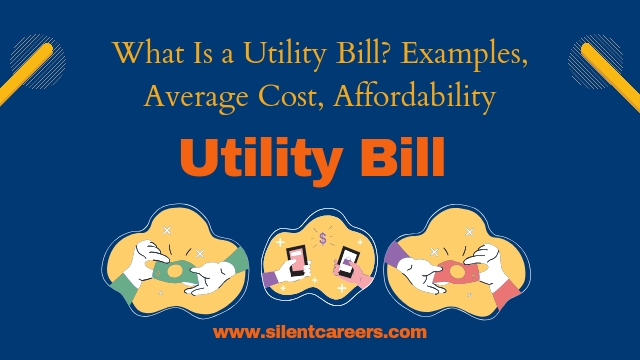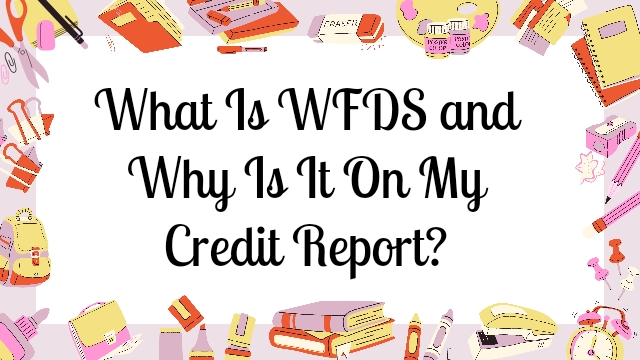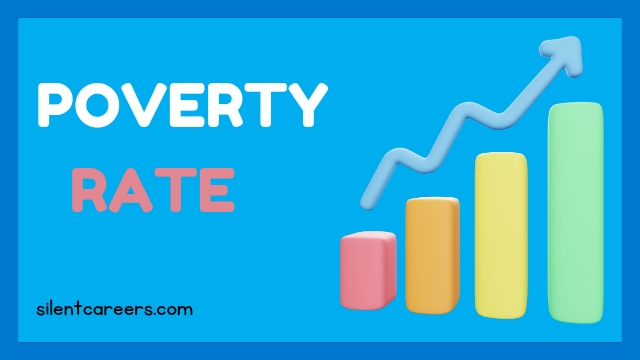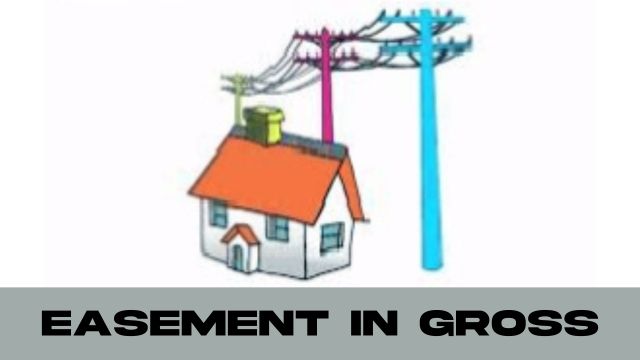
A credit sweep involves removing negative items from a credit report, often through disputing errors or negotiating with creditors. It’s a legal process but should be done carefully to avoid scams or violations of credit reporting laws.

What Is a Credit Sweep? Credit swap meaning & definition
A credit sweep involves removing negative items from a credit report, usually by disputing inaccuracies or negotiating with creditors. This process aims to improve an individual’s credit score by eliminating derogatory marks such as late payments, collections, or charge-offs. It’s essential to approach credit sweeps cautiously to avoid scams and ensure compliance with credit reporting laws.
A credit swap, also known as a credit default swap (CDS), is a financial derivative contract that allows an investor to “swap” or offset their credit risk with that of another investor. Here’s a more detailed breakdown:
- Parties Involved: A credit swap typically involves a buyer and a seller.
- Buyer: Pays periodic premiums to the seller.
- Seller: Agrees to compensate the buyer if a specified credit event (like a default) occurs.
- Purpose: It is used to hedge against the risk of default or to speculate on changes in credit risk.
- Credit Event: Events that trigger the contract can include defaults, bankruptcies, or credit rating downgrades.
In essence, a credit swap functions like an insurance policy for credit risk, where the buyer is protected against the possibility of a borrower defaulting on their debt.
Credit Sweep Programs
Credit sweep programs aim to remove negative items from credit reports, often by disputing errors or negotiating with creditors. These programs promise to quickly improve credit scores but can be risky, as some may involve fraudulent practices. It’s crucial to research and choose reputable, legal services to avoid scams.
How do credit sweeps work & its examples
Credit sweeps aim to remove negative items from a credit report by identifying and disputing inaccuracies. Here’s a detailed breakdown of how they work:
- Initial Assessment:
- Credit Report Review: A comprehensive review of the credit report to identify negative items such as late payments, collections, charge-offs, or bankruptcies.
- Identifying Errors: Distinguish between legitimate derogatory marks and errors or inaccuracies.
- Dispute Process:
- Filing Disputes: Disputes are filed with credit bureaus (Experian, Equifax, TransUnion) for each identified negative item.
- Supporting Documentation: Providing evidence or documentation to support the dispute (e.g., proof of payment, incorrect information).
- Verification by Credit Bureaus:
- Investigation: Credit bureaus investigate the disputes by contacting the creditors to verify the accuracy of the reported items.
- Response Time: Bureaus typically have 30 days to investigate and respond to the dispute.
- Removal of Negative Items:
- Outcome: If the disputed items are found to be inaccurate or unverifiable, they are removed from the credit report.
- Notification: The credit bureaus update the report and notify the consumer of the changes.
Examples of Credit Sweeps
- Example 1: Disputing Incorrect Late Payments:
- Situation: A consumer notices several late payments on their credit report that they believe were made on time.
- Action: They or their credit repair service file disputes with the credit bureaus, providing bank statements or payment confirmations.
- Outcome: If the bureaus cannot verify the late payments with the creditor, these marks are removed from the report.
- Example 2: Addressing Identity Theft:
- Situation: A consumer’s credit report includes accounts they never opened, likely due to identity theft.
- Action: They file disputes with the credit bureaus, including a police report and an identity theft affidavit.
- Outcome: The unverified accounts are removed from the credit report.
- Example 3: Removing Collections for Paid Debts:
- Situation: A debt that was paid in full still appears as a collection on the consumer’s credit report.
- Action: They dispute the collection item, providing proof of payment.
- Outcome: The collection is removed once the credit bureaus verify the payment with the creditor.
Credit sweeps can be effective for removing inaccuracies, but they must be done legally and ethically. Beware of companies promising instant or guaranteed results, as some may use fraudulent practices, leading to potential legal issues for consumers. Always verify the reputation and legitimacy of any credit repair service you consider using.
Read more: What Is a Credit-Builder Loan? How Does it Work?
Line of credit sweep vs. credit sweep
Line of Credit Sweep:
- Definition: A financial management strategy where excess funds in a bank account are automatically used to pay down a line of credit.
- Purpose: To minimize interest costs and manage cash flow efficiently.
- Mechanism: Automated transfers ensure that idle funds reduce outstanding debt, with any shortfalls covered by the line of credit.
- Example: A business uses a line of credit sweep to apply daily surplus cash to its credit line, lowering interest expenses and optimizing cash use.
Credit Sweep:
- Definition: A process aimed at removing negative items from a credit report by disputing inaccuracies or negotiating with creditors.
- Purpose: To improve an individual’s credit score by eliminating derogatory marks.
- Mechanism: Involves filing disputes with credit bureaus and providing supporting evidence to correct errors or unverified items.
- Example: An individual disputes incorrect late payments on their credit report, leading to the removal of these items and an improved credit score.
In summary, a line of credit sweep focuses on managing cash flow and reducing interest costs for businesses, while a credit sweep targets improving personal credit scores by correcting inaccuracies on credit reports.
Are credit sweeps legal? / Legality of Credit Sweeps
Credit Sweeps:
- Definition: The process of disputing negative items on a credit report with the goal of having them removed, particularly if they are inaccurate or unverifiable.
- Legal Framework: Governed by the Fair Credit Reporting Act (FCRA), which allows consumers to dispute inaccurate or incomplete information on their credit reports.
Legality:
- Legal Methods: Disputing legitimate errors on a credit report through the proper channels (credit bureaus) is legal and protected under the FCRA. This includes providing documentation to support claims and following the bureau’s dispute process.
- Illegal Practices: Any attempt to remove accurate, negative information through fraudulent means, such as submitting false information or repeatedly disputing items without basis, is illegal. This includes hiring companies that use such practices.
Key Points:
Legal Credit Sweep:
- Dispute Errors: Correcting inaccuracies or outdated information.
- Documentation: Providing evidence to support disputes.
- Legitimate Process: Following the established procedures by credit bureaus.
Illegal Credit Sweep:
- Fraudulent Disputes: Filing disputes with false information.
- Misrepresentation: Attempting to remove accurate negative information.
- Scams: Using services that promise guaranteed results or quick fixes through deceptive practices.
Warning Signs of Illegitimate Services:
- Guaranteed Results: Promises to remove all negative items, regardless of their accuracy.
- High Upfront Fees: Charging significant fees before providing any service.
- Lack of Transparency: Not explaining the dispute process or how they intend to remove items.
- Pressuring Tactics: Urging you to sign up quickly without providing full details.
Credit sweeps can be legal if done correctly and ethically. Consumers should be cautious and ensure they are following legitimate dispute processes, avoiding any fraudulent activities or services that promise too-good-to-be-true results. Always research and choose reputable, transparent credit repair services if needed.
Watch Out for Credit Sweep Scams
Credit sweep scams promise to remove negative items from your credit report quickly and guaranteed. These scams often use fraudulent methods, such as submitting false information. Avoid services demanding high upfront fees, guaranteeing results, or using deceptive practices. Always verify the legitimacy of credit repair services.
Alternatives to credit sweeps / What is a Better Alternative to a Credit Sweep?
Instead of opting for a credit sweep, consider these more reliable and ethical alternatives to improve your credit score:
- Dispute Inaccuracies Yourself:
- Process: Obtain your credit reports from the three major bureaus (Experian, Equifax, TransUnion) and identify errors.
- Action: File disputes directly with the credit bureaus, providing necessary documentation to support your claims.
- Outcome: Errors that cannot be verified or are inaccurate will be removed.
- Pay Down Debt:
- Strategy: Focus on paying off high-interest debts first.
- Benefit: Reducing your overall debt load and credit utilization ratio can significantly boost your credit score.
- Set Up Payment Reminders:
- Tools: Use reminders or automatic payments to ensure all bills are paid on time.
- Impact: Timely payments are crucial for maintaining and improving your credit score.
- Negotiate with Creditors:
- Action: Contact creditors directly to negotiate pay-for-delete agreements or payment plans.
- Result: Some creditors may agree to remove negative items in exchange for full or partial payment of the debt.
- Credit Counseling:
- Service: Work with a reputable credit counseling agency to develop a debt management plan.
- Support: They can help you create a budget, manage debt, and provide financial education.
- Secured Credit Cards:
- Option: Open a secured credit card where you deposit a certain amount as collateral.
- Usage: Use it responsibly to build or rebuild your credit over time.
- Become an Authorized User:
- Method: Get added as an authorized user on someone else’s credit card with a good payment history.
- Effect: Their positive payment history can help improve your credit score.
- Credit Builder Loans:
- Product: Take out a small loan specifically designed to build credit.
- Repayment: Regular, on-time payments can boost your credit score.
These alternatives offer legitimate, ethical ways to improve your credit score over time without resorting to potentially illegal or deceptive credit sweep methods. By taking proactive and responsible steps, you can achieve lasting improvements to your credit health.
Hiring a Credit Repair Company to Fix Your Credit
Hiring a credit repair company can help fix your credit by disputing inaccuracies and negotiating with creditors on your behalf. Ensure you choose a reputable company by researching their background, checking reviews, and verifying their methods. Be wary of high upfront fees, guaranteed results, or illegal practices. Always understand your rights under the Fair Credit Reporting Act.
The Credit Dispute Process
The credit dispute process involves obtaining your credit report, identifying inaccuracies, and submitting disputes to credit bureaus. Provide supporting documentation for your claims. Credit bureaus have 30 days to investigate and respond. If errors are confirmed, they will be corrected or removed from your report.
How to fix your own credit
Fixing your own credit involves a series of steps to improve your credit score and overall financial health. Here’s a comprehensive guide:
1. Obtain Your Credit Reports
- AnnualCreditReport.com: Get free copies of your credit reports from Experian, Equifax, and TransUnion.
- Review Thoroughly: Check for errors, inaccuracies, or outdated information.
2. Dispute Inaccuracies
- Identify Errors: Look for incorrect personal information, accounts that don’t belong to you, incorrect account statuses, and duplicate entries.
- Submit Disputes: File disputes with the credit bureaus online, by mail, or by phone. Provide supporting documentation.
- Follow Up: Monitor the progress of your disputes. Credit bureaus typically have 30 days to investigate and respond.
3. Pay Down Debt
- Prioritize High-Interest Debt: Focus on paying off high-interest debts first.
- Debt Snowball Method: Alternatively, start with the smallest debt and move to larger ones.
4. Make Timely Payments
- Automatic Payments: Set up automatic payments or reminders to ensure bills are paid on time.
- Payment History: Consistent on-time payments significantly improve your credit score.
5. Reduce Credit Utilization
- Target: Aim to keep your credit utilization ratio below 30%.
- Pay Down Balances: Reduce outstanding credit card balances.
6. Build Positive Credit History
- Secured Credit Cards: Use secured credit cards responsibly to build or rebuild credit.
- Authorized User: Become an authorized user on a family member’s or friend’s credit card.
7. Limit New Credit Applications
- Avoid Multiple Applications: Too many credit inquiries can negatively impact your score.
- Space Out Applications: Only apply for new credit when necessary and space out applications.
8. Monitor Your Credit Regularly
- Credit Monitoring Services: Use free or paid services to track changes in your credit report.
- Annual Reviews: Regularly review your credit report to catch and address issues early.
9. Negotiate with Creditors
- Payment Plans: Work with creditors to set up manageable payment plans.
- Settlements: Negotiate settlements for debts that you can pay off for less than the full amount owed.
10. Seek Professional Advice if Needed
- Credit Counseling: Consider reputable credit counseling agencies for additional guidance and support.
By following these steps, you can effectively improve your credit score and financial health on your own.
Your legal rights with credit repair services
When using credit repair services, you have specific legal rights protected by the Credit Repair Organizations Act (CROA). Here’s what you need to know:
Your Legal Rights
- Written Contract: You must receive a written contract detailing your rights and the services to be provided before you sign anything.
- Three-Day Cancellation: You have the right to cancel the contract within three days without any charges.
- No Upfront Fees: Credit repair companies cannot request or receive payment until they have completed the promised services.
- Disclosure: Companies must inform you of your legal rights, including your ability to dispute credit report information yourself for free.
- Accurate Information: Credit repair services cannot misrepresent what they can do or encourage you to provide false information.
- Timeframe: You must be informed of how long it will take to see results from their services.
Key Points to Remember
- Review Contracts: Carefully review and understand the contract before signing.
- Be Wary of Promises: Avoid companies that guarantee specific results or promise to remove accurate information.
- Report Violations: If your rights are violated, you can file a complaint with the Consumer Financial Protection Bureau (CFPB) or your state’s attorney general.
Understanding and exercising these rights ensures that you are protected and informed when engaging with credit repair services.
Credit repair vs. building credit
Credit Repair:
- Focus: Fixing existing issues on your credit report.
- Methods: Disputing inaccuracies, removing errors, and negotiating with creditors to resolve outstanding debts.
- Goal: Improve your credit score by correcting or removing negative items.
- Example: Disputing a mistakenly reported late payment or settling a debt in collections.
Building Credit:
- Focus: Establishing and maintaining positive credit history.
- Methods: Using credit responsibly, such as making on-time payments, maintaining low credit utilization, and opening new credit accounts judiciously.
- Goal: Create a strong, positive credit history over time.
- Example: Using a secured credit card responsibly, paying off balances in full each month, or becoming an authorized user on a trusted family member’s credit card.
Credit repair addresses past issues to clean up your credit report, while building credit focuses on creating a strong, positive credit history for the future. Both are essential for maintaining good credit health.
Credit Repair: Legal vs. Illegal
Legal Credit Repair:
- Disputing Errors: Correcting inaccuracies or outdated information on your credit report through proper channels.
- Negotiating with Creditors: Arranging pay-for-delete agreements or settlements for debt resolution.
- Using Legitimate Services: Employing reputable credit repair companies that follow the law and charge only for services rendered.
Illegal Credit Repair:
- Submitting False Information: Filing disputes with false or misleading information to remove accurate negative items.
- Misrepresentation: Claiming to remove accurate negative information permanently or guaranteeing specific results.
- Fraudulent Practices: Using or promoting illegal methods, such as creating a new credit identity or repeatedly disputing legitimate items without cause.
Legal credit repair involves correcting inaccuracies and working within the law, while illegal practices involve deceit and fraud, which can lead to severe consequences, including legal action. Always choose ethical, transparent methods for repairing your credit.
Do Factual Disputes Take A Long Time?
Factual disputes typically take up to 30 days for credit bureaus to investigate and respond. If additional information is provided, the process can extend by 15 more days. The duration depends on the complexity of the dispute and the responsiveness of creditors.
What is a Better Alternative to a Credit Sweep?
A better alternative to a credit sweep is disputing errors on your credit report yourself, paying down debt, and using credit responsibly. These methods improve your credit score legally and ethically over time.
Do Factual Disputes Take A Long Time?
Factual disputes generally take up to 30 days for credit bureaus to investigate and respond. If you provide additional information during the investigation, it can extend the process by 15 days. The time required depends on the dispute’s complexity and the creditor’s responsiveness in verifying the information.
What happens when you do a credit sweep?
When you do a credit sweep, you attempt to remove negative items from your credit report by disputing inaccuracies or unverifiable information with credit bureaus. If successful, these items are removed, potentially improving your credit score. However, it must be done legally to avoid fraudulent practices.
What are the benefits for credit sweep?
The benefits of a credit sweep, when done legally and ethically, include:
- Improved Credit Score: Removing inaccurate or unverifiable negative items can significantly boost your credit score.
- Better Loan Terms: Higher credit scores can lead to lower interest rates and better terms on loans and credit cards.
- Increased Approval Chances: A cleaner credit report can improve your chances of getting approved for new credit.
- Financial Opportunities: Better credit opens doors to various financial opportunities, such as mortgages and auto loans.
How much does a credit sweep cost?
The cost of a credit sweep can vary widely depending on the service provider and the extent of the credit repair needed. On average, you might expect to pay between $500 and $1,500 for a credit sweep service.
Some companies charge a flat fee, while others might offer monthly plans ranging from $50 to $150 per month. It’s crucial to research and choose reputable companies to avoid scams and ensure compliance with legal standards.
How to do credit sweep yourself?
To do a credit sweep yourself:
- Obtain Your Credit Reports: Get reports from all three bureaus (Experian, Equifax, TransUnion).
- Identify Inaccuracies: Look for errors or outdated information.
- File Disputes: Dispute inaccuracies with each credit bureau online, by mail, or by phone.
- Provide Documentation: Include evidence supporting your dispute.
- Follow Up: Monitor responses and verify that incorrect items are removed.
How long does a credit sweep take?
A credit sweep typically takes 30 to 45 days. This includes the time for the credit bureaus to investigate and respond to disputes. If additional documentation is needed or disputes are complex, the process might extend by another 15 days.
What should you do now?
If you’re considering a credit sweep or improving your credit, here are the next steps:
- Obtain Your Credit Reports: Get reports from Experian, Equifax, and TransUnion to review for inaccuracies.
- Identify Errors: Look for any incorrect or outdated information that needs correction.
- Dispute Inaccuracies: File disputes with the credit bureaus online or by mail, providing supporting documentation.
- Monitor Progress: Track the status of your disputes and ensure corrections are made.
- Consider Credit Building Strategies: Pay down debt, make timely payments, and maintain a low credit utilization ratio.
- Seek Professional Advice if Needed: Consult with a reputable credit counselor or repair service if you need additional help.
Taking these steps will help you address issues and work towards a better credit score.








